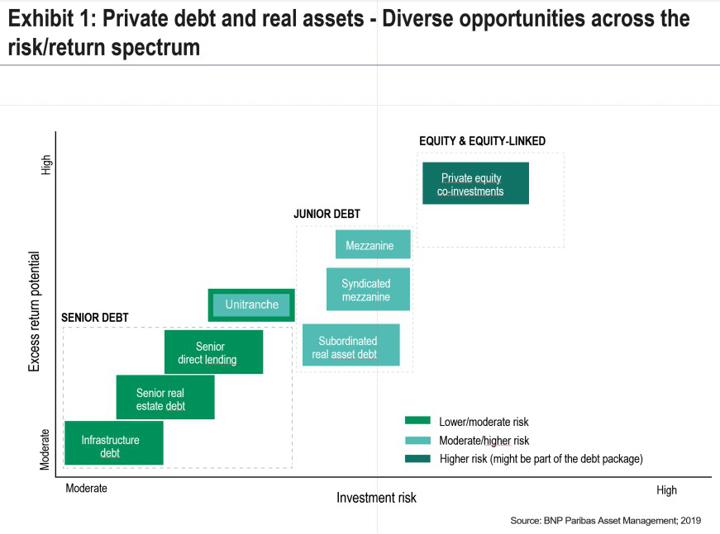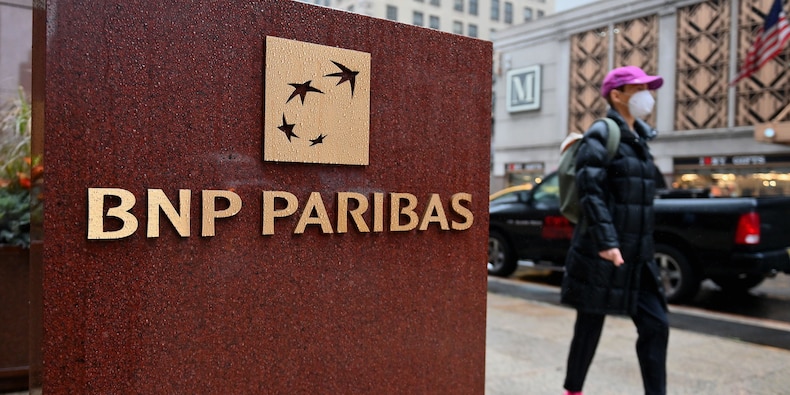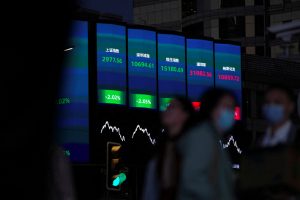(ATF) Public markets are facing challenges: They no longer offer the diversification they did in the past – the globalisation of capital has led to higher equity market correlations between countries and sectors. And with interest rates in developed markets at the low end, government bonds may no longer be a satisfactory hedge for risky assets.
In terms of yields, the return expectations for listed equity have fallen, while trillions of dollars of government debt are trading with a negative yield. In private debt markets, investors can find both a positive yield and income, without the kind of volatility that marked public markets in 2020, which was, admittedly, an exceptional year.
A resilient 2020
Private debt markets were quite resilient in 2020. Publicly traded corporate bonds saw drawdowns of 15-25% before rallying again, while for private debt portfolios, the declines were limited to 4-5%. That reflects valuations of these portfolios being based on company fundamentals, and less on sentiment.
At the height of the coronavirus crisis, it was still possible to source loans that offered a liquidity premium, which is what private debt investors seek. In the public markets, by contrast, credit spreads skyrocketed, eroding liquidity premiums or driving them into the red, even if only briefly.
Since the end of the year, because of the current low interest-rate environment, we are again seeing attractive liquidity premiums across private debt market segments. So, in our view, private markets retained their appeal during the crisis and continue to offer opportunities (see below).
Impact of Covid-19
The pandemic has created three groups of borrowers, which could persist for years:
1/ Companies in sectors that have been hit hard and will need to revisit their business models as the crisis wanes. For example, aviation.
2/ Companies in sectors that have been affected deeply, but that operate in markets with solid fundamentals and that can be expected to bounce back strongly once economies open and restrictions are lifted. For instance, tourism or the events industry.
3/ Companies in sectors that have been resilient throughout or even benefited from the pandemic such as healthcare, IT and telecom.
Interest in private debt markets remains high. Today, investors better understand that private debt markets are broad and can offer good opportunities across sectors despite the risks.

Opportunities
Specifically, we see opportunities in infrastructure debt given its safe haven like status, although one has to be discerning.
For instance, the outlook for airports and transport is challenging. In two other areas – corporate and commercial real estate – the level of risk has increased in these segments due to the impact of the pandemic.
However, there are still sources of value in segments such as logistics.
Continued focus on sustainability
Health crisis or not, we believe it is key to take sustainability into account when investing in private companies. Take an infrastructure project which could span several decades. Sustainability factors are going to impact the borrower’s ability to reimburse the debt.
Hence, it is essential when you are taking a position for the next 10, 20 or 30 years in such an illiquid asset that they have a solid environmental, social and governance (ESG) profile.
To this end, we believe in making a thorough assessment of borrowers, even if it is a more labour-intensive process than is the case for public companies. By being listed, public companies have a duty to report regularly on all aspects of their business. Access to information is often less automatic or information is less accessible in private markets.
We seek to measure things such as the net environmental contribution of a project and compare it with the average of the universe to determine whether the overall impact is positive or negative. We also look at CO2 emissions and whether the project is aligned with the Paris Agreement.
We believe a bias towards sustainability has helped us with returns. We use it as a security selection tool to avoid unsuitable investments. It has proved to be a reliable indicator of the quality of a project.
Investing in private debt and real assets can offer investors benefits such as attractive risk-adjusted return potential and real diversification, setting these ‘alternative’ markets apart from their traditional public counterparts.
# David Bouchoucha is Head of Private Debt & Real Assets at BNP Paribas Asset Management
























